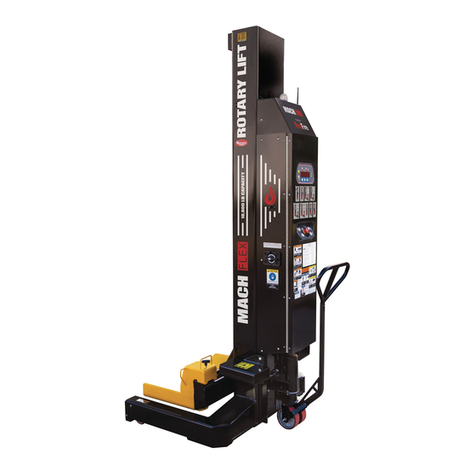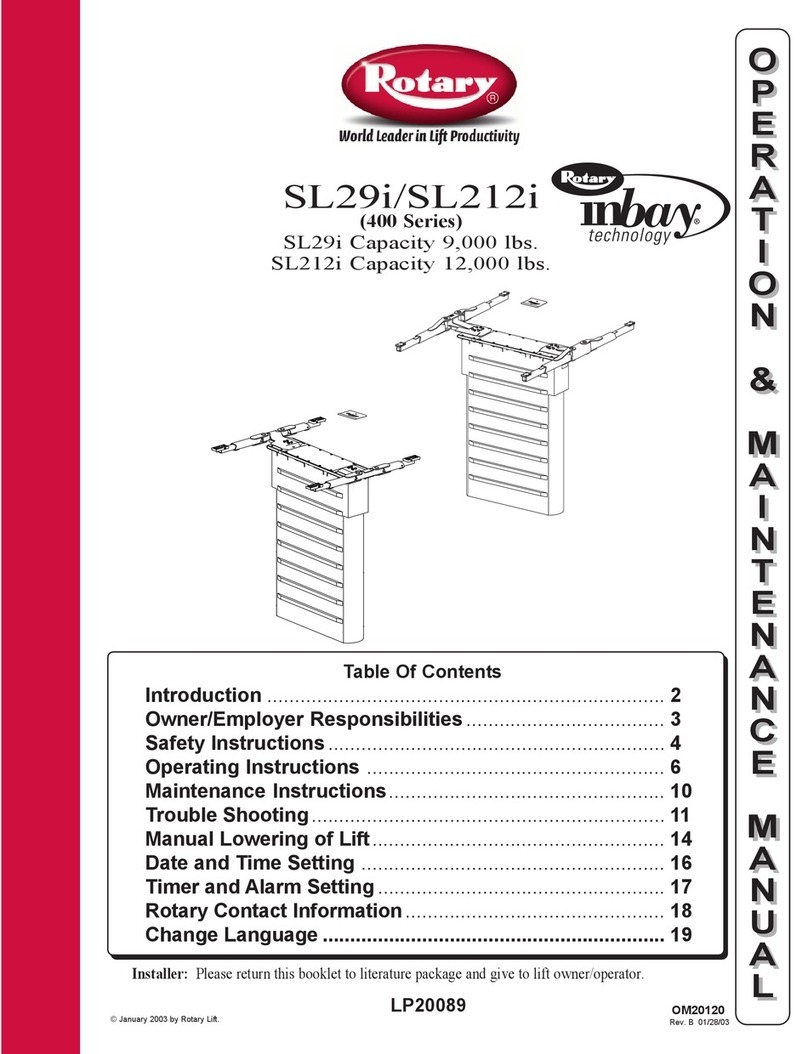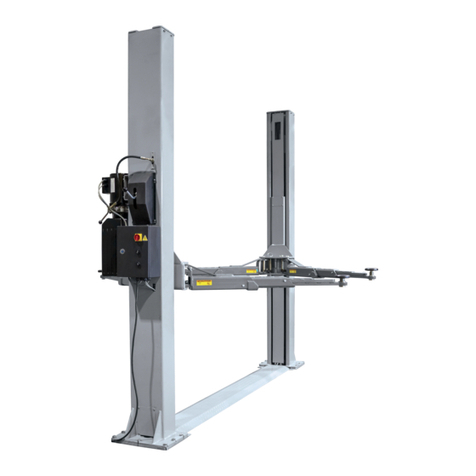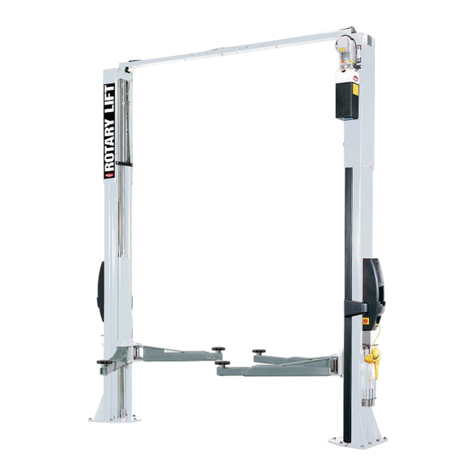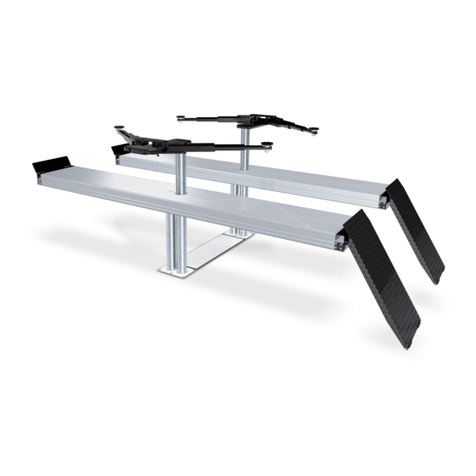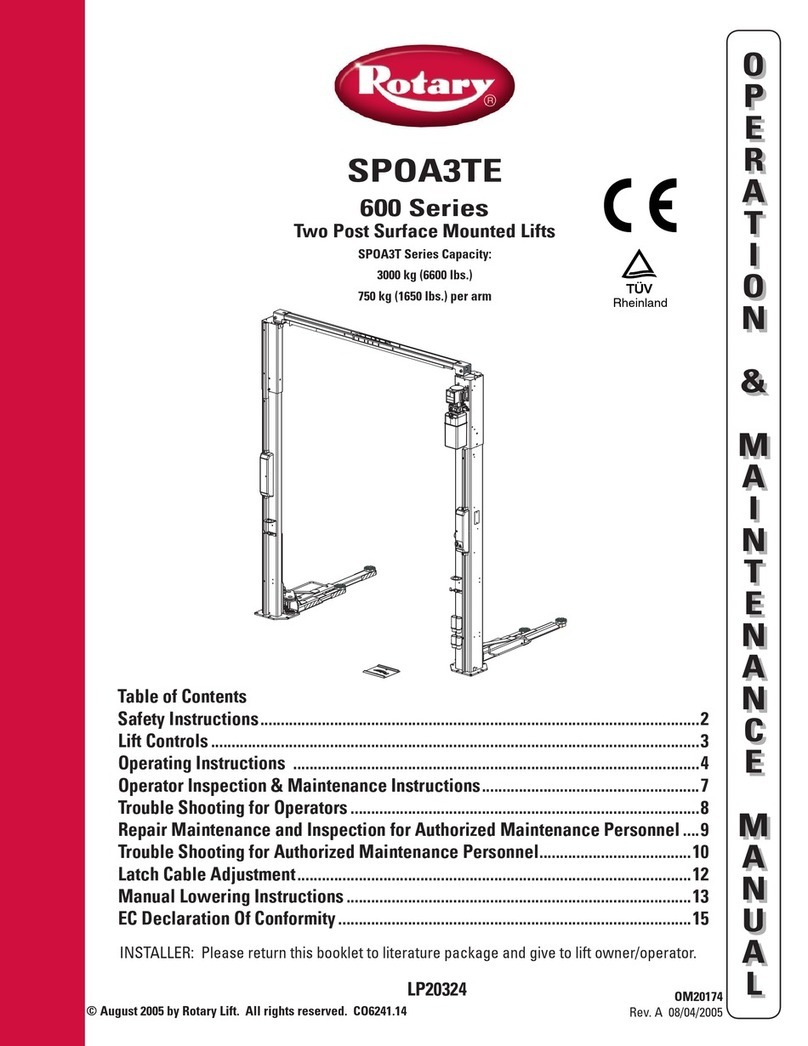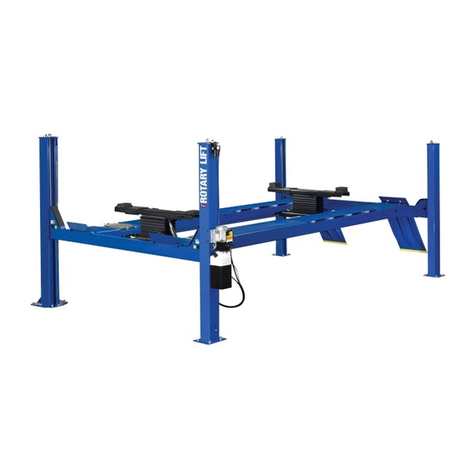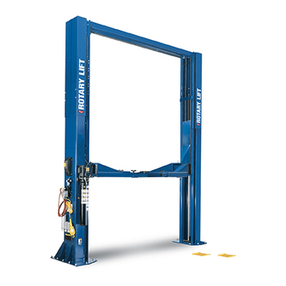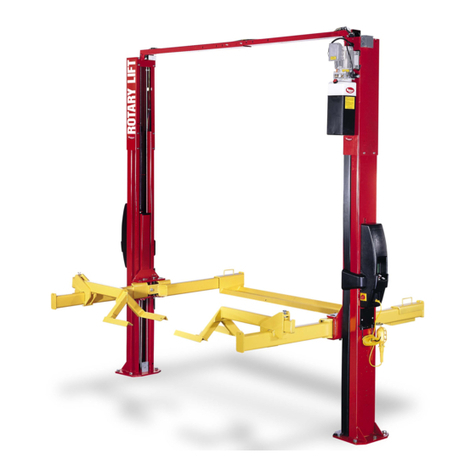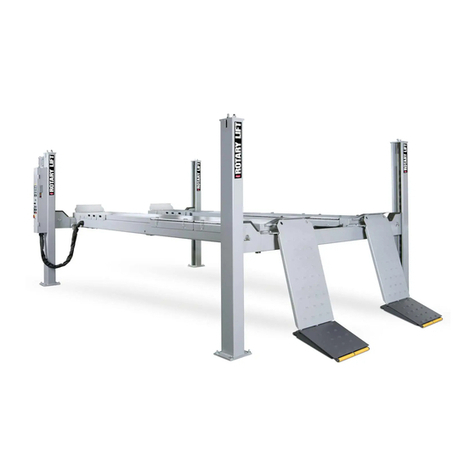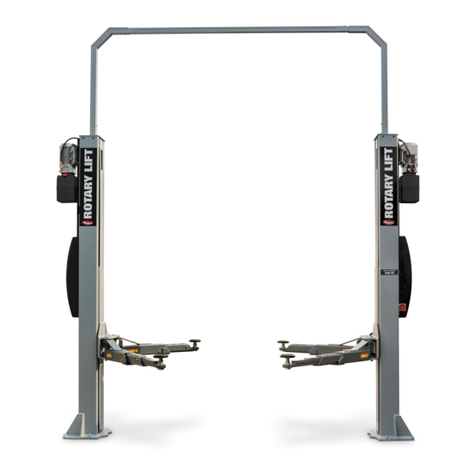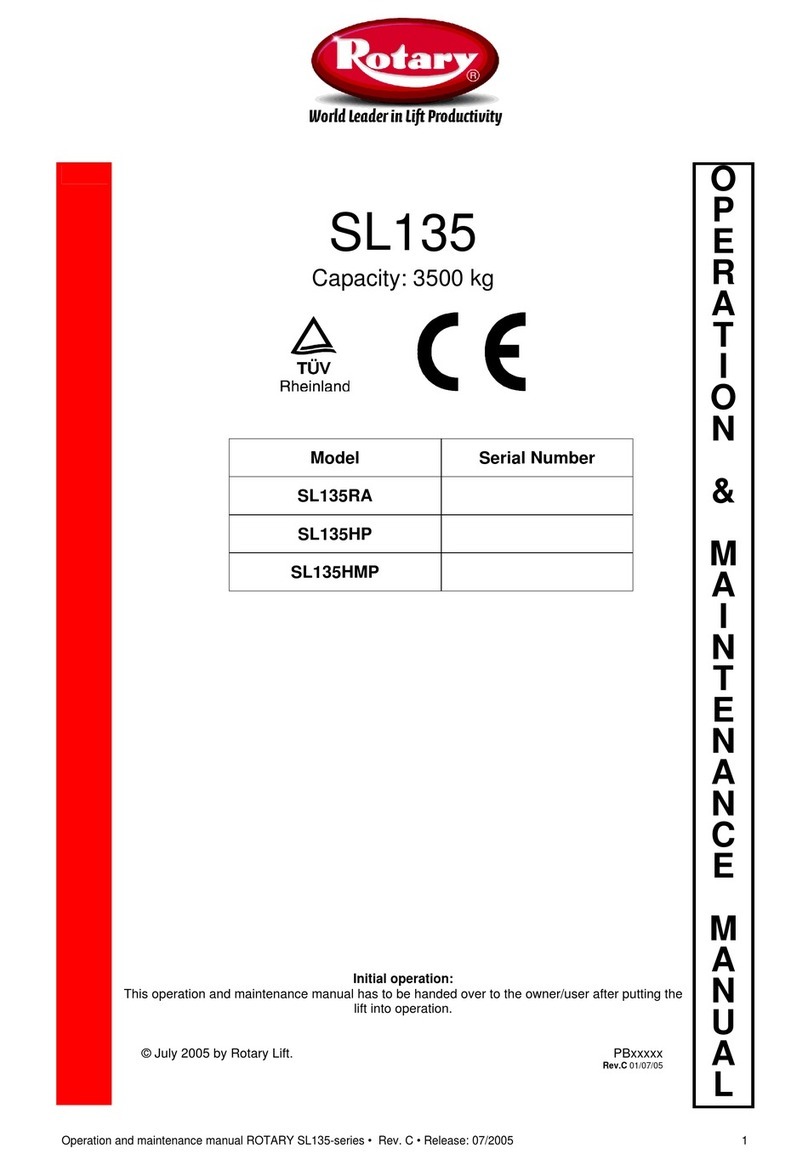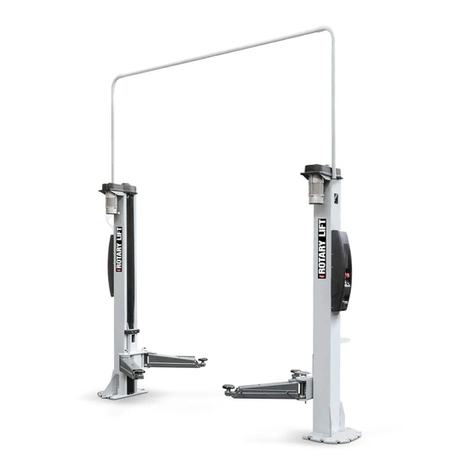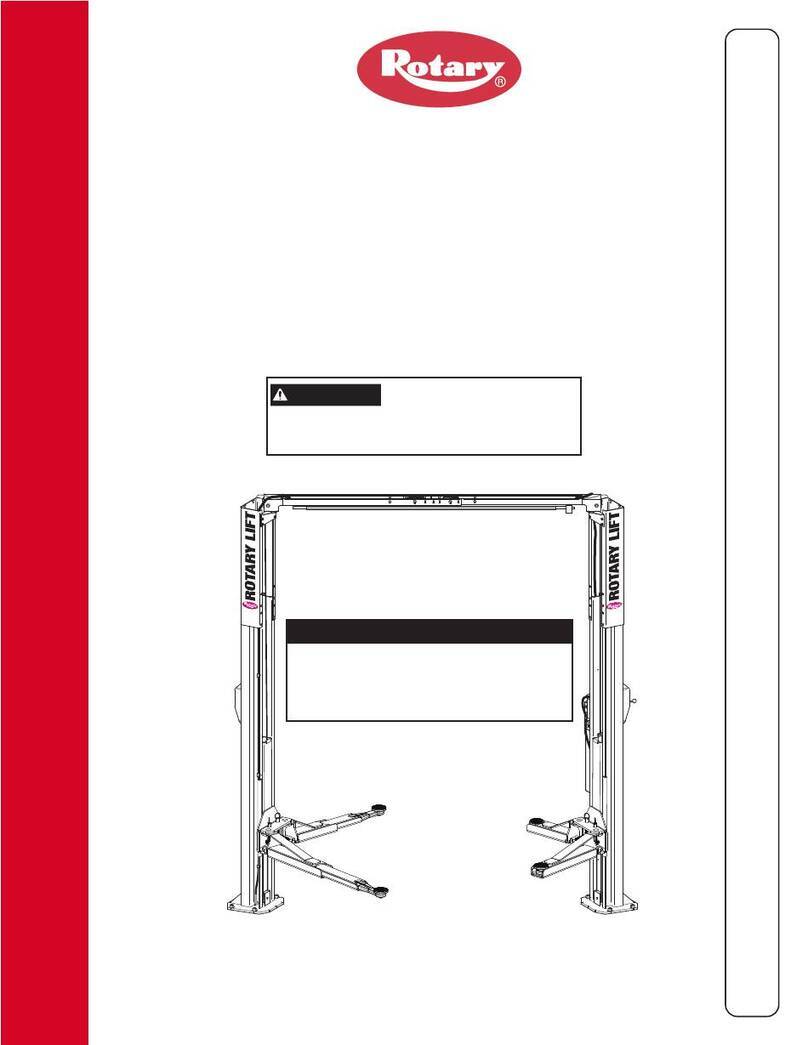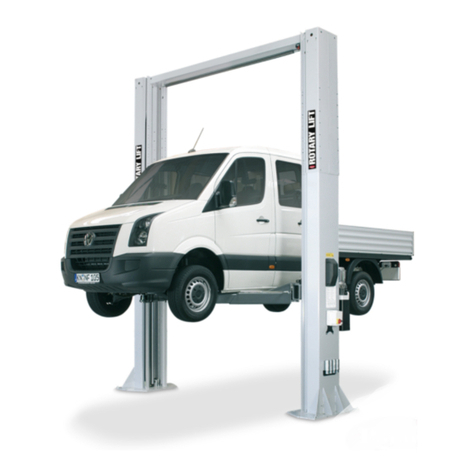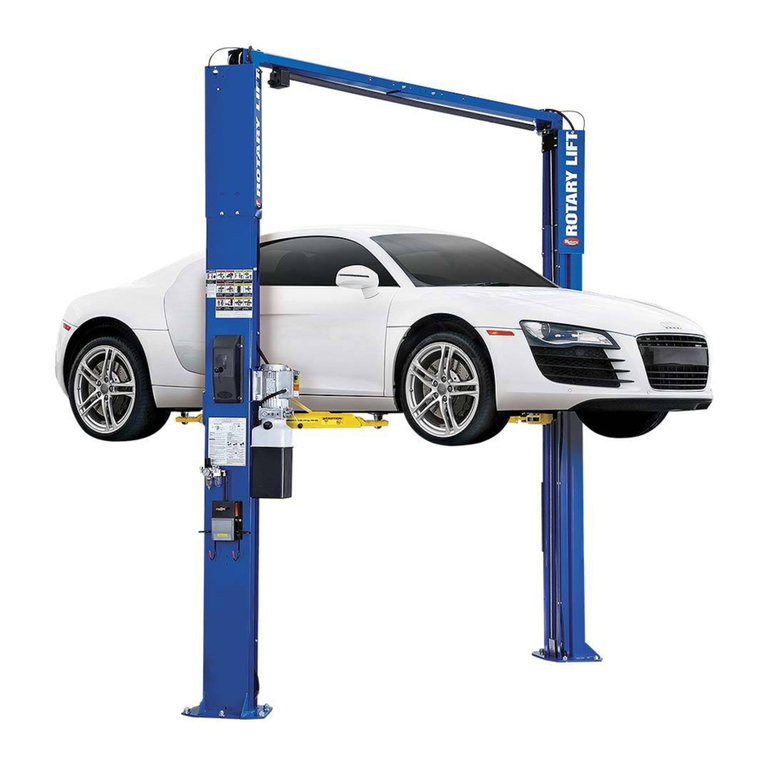
EMBALLAGE, TRANSPORT ET
STOCKAGE
LES OPÉRATIONS D’EMBALLAGE, DE
MANUTENTION, DE TRANSPORT ET DE
DÉBALLAGE DOIVENT ÊTRE CONFIÉES A UN
PERSONNEL EXPÉRIMENTÉ DANS CE GENRE
D’OPÉRATIONS, CONNAISSANT BIEN L’ÉLÉVATEUR
ET LE PRÉSENT MANUEL
EMBALLAGE
L’élévateur est expédié monté, enveloppé en un seul colis sous film
thermorétractable, posé sur une palette en bois et cerclé au moyen de
deux feuillards métalliques.
Le poids total du colis est d’environ 500 kg.
Fig.1 Manutention par chariot élévateur
MANUTENTION
Les palettes peuvent être déplacées soit à l’aide d’un chariot élévateur
(fig. 1) , soit avec une grue ou un pont roulant (fig. 2). Dans ces der-
niers cas, les palettes devront toujours être sanglées au minimum par
deux élingues.
Fig.2 Manutention au moyen d’élingues
NB. Les moyens utilisés devront permettre de garantir une manu-
tention en toute sécurité, en tenant compte des dimensions, du po-
ids, du centre de gravité, des parties en saillie et des éléments fra-
giles à ne pas détériorer.
STOCKAGE
Les colis devront toujours être conservés dans des endroits couverts et
protégés, à des températures comprises entre -10°C et +40°C et à l’abri
du rayonnement direct du soleil.
GERBAGE DES COLIS
Le type d’emballage utilisé permet d’empiler, dans les magasins, jus-
qu’à 2 élévateurs l’un sur l’autre, pourvu qu’ils soient correctement posi-
tionnés et assurés contre tout risque de chute.
Les colis ne peuvent être gerbés qu’à l’unique condition de ne pas être
posés directement les uns sur les autres, mais que soient intercalées
des traverses en bois comme le montre la fig. 3.
Dans les camions ou les containers, il est possible d’empiler jusqu’à 2
élévateurs, pourvu qu’ils soient sanglés et assurés contre tout risque de
chute.
Fig.3 Gerbage des élévateurs
TRANSPORT, VERPACKUNG UND
LAGERUNG
ALLE VERPACKUNGS-, HEBE-, TRANSPORT UND
AUSPACK- ARBEITEN SIND NUR VON
AUSGEBILDETEM FACHPERSONAL, DAS
KENNTNISSE DES LIFTS UND DER
BEDIENUNGSANWEISUNG BESITZT,
DURCHZUFÜHREN.
VERPACKUNG
Die Scherenhebebühne wird auf einer Palette verpackt angeliefert. Sie
ist mittels einer Schrumpffolie und Zwei Metallbändern auf der Holzpa-
lette befestigt.
Das Gesamtgewicht beträgt inklusive der Verpackung cirka 500kg.
Abb. 1 Anheben mit Gabelstapler
ANBEBEN UND BEWEGEN
Die Holzpalette kann mit Hilfe eines Gabelstaplers (Abb.1) oder mit ei-
nem Kran Abb.2 angehoben und bewegt werden.
Für den Fall das die Holzpalette mit einem Kran bewegt wird, muss die
Palette immer mit mindestens zwei Tragegurten angehoben werden.
Abb. 2 Anheben mit Kran
Achtung: Die gewählten Hubmittel müssen für den Hub und die
Bewegung unter Berücksichtigung der Sicherheitsbestimmungen
geeignet und zugelassen sein.
Zusätzlich sind den Abmessungen, dem Gewicht, dem Schwer-
punkt den überstehenden Teilen und empfindlichen Teilen große
Aufmerksamkeit zu schenken.
LAGERUNG
Die Verpackten Güter müssen immer in überdachten Räumen bei einer
zwischen –10°C und +40°C gelagert werden. Die Güter dürfen nicht di-
rektem Sonnenlicht ausgesetzt werden.
STAPELN DER PALETTEN
Die Paletten sind so ausgelegt, das bis zu zwei Paletten übereinander
gestapelt werden können. In diesem Fall sind die Kisten mit Gurten ge-
gen Umstürzen zu sichern. Abb.3
Auf LKW oder in Containern können ebenfalls bis zu zwei Kisten auf-
einander gestellt werden. Auch in diesem Fall sind die Kisten mit Gur-
ten gegen Umstürzen zu sichern.
Abb. 3 Stapeln der Lifte
EMBALAJE, TRANSPORTE Y
ALMACENAMIENTO
LAS OPERACIONES DE EMBALAJE, ELEVACIÓN,
DESPLAZAMIENTO, TRANSPORTE Y DESEMBALAJE
DEBEN SER CONFIADAS EXCLUSIVAMENTE A
PERSONAL QUE SEA EXPERTO EN ESTAS
OPERACIONES Y QUE CONOZCA BIEN EL
ELEVADOR Y ESTE MANUAL
EMBALAJE
El elevador se envía montado, apoyado en una plataforma de madera y
envuelto en un único paquete que está embalado con una lámina de
material termoretráctil y sellado con dos flejes metálicos. El peso total
del paquete es de aproximadamente 500 Kg.
Fig.1 Desplazamiento con carretilla elevadora
ELEVAMIENTO Y DESPLAZAMIENTO
Las plataformas de madera puede elevarse tanto con carretillas
elevadoras (Fig.1) como con grúas o grúas-puente (Fig. 2). En el caso
de desplazamiento con grúas o grúas puente, los paquetes deben estar
atados con eslingas con un mínimo de 2 fajas.
Fig.2 Elevación con eslinga
NOTA IMPORTANTE: Los medios elegidos deben ser adecuados
para la elevación y el desplazamiento en condiciones de seguri-
dad, teniendo en cuenta las dimensiones, peso, baricentro, salien-
tes y partes delicadas que no se deben dañar.
ALMACENAMIENTO
Los embalajes deben conservarse en lugares cubiertos y protegidos, a
una temperatura comprendida entre los -10°C y +40°C y no deben
exponerse a los rayos directos del sol.
APILADO DE LOS PAQUETES
El tipo de embalaje previsto prevé la posibilidad de apilar en almacén
hasta 2 paquetes uno sobre otro, siempre que se pongan
correctamente y se aseguren contra la caída.
Los paquetes pueden apilarse solamente a condición que no se
apoyen directamente uno sobre otro, sino que se ponga en medio
viguetas de madera como se indica en la Fig. 3.
En las cajas del camión o en los contenedores se pueden apilar hasta
2 paquetes, siempre que se aseguren bien con flejes y se aseguren
contra la caída
Fig.3 Apilado de los elevadores
5
